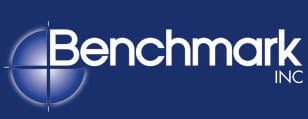 By Curt Liscum, RRC, RRO
By Curt Liscum, RRC, RRO
Senior Consultant
By now we have all heard that the roofing labor market is tight and is expected to remain as such for the foreseeable future. Repeatedly provided as a response when asked, one of the top challenges faced by roofing companies is finding and keeping skilled roofing mechanics. Although the U.S. Bureau of Labor Statistics predicts only two percent growth over the next 10 years, when you factor in retirements and those leaving the trade, the anticipated need is about 11 percent per year. With a skilled labor shortage and roofing systems becoming more technical in nature, what can we expect in the future? Possibly increased costs and longer project waiting times.
Yes, I think costs will increase and projects will be delayed due to material and manpower shortages; however, I see a potential bright spot on the horizon. We have seen an increase in labor-saving roofing products from roofing manufacturers that may help reduce the overall effects of labor shortage. New products do not come without some uncertainty and concern within the industry. Bringing a product to market just because it saves labor (without vetting performance, longevity, watertightness, durability, sustainability, and resilience) may not be in the best long-term interest of the industry.
This article will explore a few of the most common labor-saving products in the market today, their history, and what (if any) concerns we have regarding use of the products.
Although not a new system, the induction welded attachment method for single-ply membrane is a labor-saving alternative to traditional mechanically attached single-ply roof systems. First introduced in the late 1990s, this system, like all new systems, has gone through equipment, material, and process refinements until we have the commonly accepted system of today. Induction welding is the process of electromagnetic heating a conductive object (coated metal plate), thereby fusing the coated plate and backside of the roof membrane. Labor-saving comes with the ability to use wider membrane sheets (less seams) while maintaining narrower rows of attachment points, doubling up on fastener purpose (both membrane attachment and insulation/cover board attachment), and the ability to achieve better wind up-lift resistance with fewer fasteners.
Self-adhered roof membrane is another labor-saving product that has been in the market for over 20 years. Originally termed “peel-n-stick” membranes, these membranes have undergone numerous refinements as manufacturers develop improved adhesive and primer technologies. Single-ply, modified bitumen, and accessory sheets (such as underlayments, vapor retarders, and air barriers) all can be found using self-adhered application technology. Self-adhered membranes can be finicky as it relates to product temperatures, ambient temperatures, primer application, and membrane installation procedures. But, if installed properly, have proven to provide longevity, durability, and watertightness expected of roof membranes today. Labor-savings is achieved by not having to apply adhesives and in some cases, not needing to perform additional steps for laps seaming as the lap seams use similar self-adhered technologies.
In late 2010, the adhesive-less membrane attachment method that uses hook and loop (VELCRO) technology was introduced. Currently only available on specific single-ply membranes, the system includes a proprietary cover board with hook technology and a fleece back membrane with the loop technology. With the cover board securely attached to the substrate and membrane mated to the cover board, reasonable wind up-lift resistance is achieved. Labor-saving is achieved by the lack of membrane adhesives, reduced installation temperature restrictions, and faster install times. Our concern is the limited track record and performance of the hook and loop technology over time, as well as with cyclic wind events.
Not to be out done, the shingle market has also gotten into the labor-saving market by the introduction of larger 42” shingles and wider nailing areas. Standard shingle width is 36” for imperial or 1 meter (39.37”) for metric. The increased shingle size means less shingles per roof and the wider nailing area means less nailing accuracy required and faster installation times. As these technologies are relatively new, time will tell if they prove beneficial to the industry.
Composite or laminated boards have been in the market for years and seem to perform acceptably. In recent years, we have noticed that some manufacturers have started to factory laminate insulation, cover boards, and even modified bitumen base ply membrane into one application step. Labor-saving extends for the ability to install two or three product layers with one labor step. Concerns have been noted with the inability to fully stagger board joints and ply laps as with traditional single layer application methods. The jury is still out on how this will affect thermal bridging and long-term roof performance.
Although not an installation labor-savor, a single-ply membrane with a protective film can be a huge labor-saving addition to any project with a dirty tear-off or dusty new construction site. At the end of the project most owners anticipate seeing a new white colored membrane, not a dirty, dingy asphalt colored membrane resulting from tear-off debris or construction site dust. These membranes are manufactured with a protective film that can be removed at the end of the project leaving a clean, white membrane and saving time required to clean the membrane at the end of the project. A couple of words of caution, the film is easily damaged and can be displaced by wind; both conditions would negate its value to the project.
Project labor-saving can not only be achieved by using available products, it can also be realized through labor-saving installation methods. One such method gaining popularity is the installation of heat-welded modified bitumen membranes using a contained, self-propelled, and elf-guided machine. The machine is capable of increased daily production with reduced manpower and reduced fuel consumption. This method also improves installation quality and consistency. The machine is not well suited for roofs with numerous penetrations or irregular surfaces.
Numerous ancillary products have been introduced over the past few years that can contribute to labor-saving in the overall project.
- Pre-cut crickets, saddles, and drain sumps – In lieu of having to take standard stock tapered insulation panels and field cut crickets, saddles, and sumps, these sloping devices can be purchased and installed without the need and expertise to layout and cut stock tapered insulation boards.
- Manufactured metal edging – Purchasing designed and manufactured metal edging not only reduces fabrication and installation labor, it should also vastly increase wind performance and compliance with codes and insurance regulations.
- Adhesives – Recent changes and improved technologies with both insulation and membrane adhesives have created labor-saving opportunities through increased application windows and faster installation methods. Many of these new technologies and products have application temperatures and product storage temperatures that are critical and must be adhered to for proper adhesion to occur.
- STPE technology – STPE (Silyl Terminated Polyether) technology has improved both adhesive and waterproofing attributes while reducing application requirements. STPE is basically a blend of the good attributes of both silicone and polyurethane products and can be used as an adhesive or waterproofing system. STPE has a fast cure time, can be installed using multiple application methods, can be applied to “green” concrete to expedite construction schedules, and can be applied with minimal surface preparation, all contributing to labor-saving attributes of the product. Attention to application and product storage temperature ranges, along with product reinforcement requirements, is necessary for good performance.
Change and product improvements are an industry fact and must be implemented with care and intentional consideration. Many of the discussed labor-saving products have been on the market for several years and you may already have some on your buildings that are performing admirably. We anticipate many more of these products will surface as the skilled roofing mechanic shortage continues. Roof design is more than just individual products, it is a system approach and how each product works in concert with each other to meet the project goals. If you are interested in discussing how these labor-saving products could be used to reduce overall project cost on your next project, please contact Benchmark.
